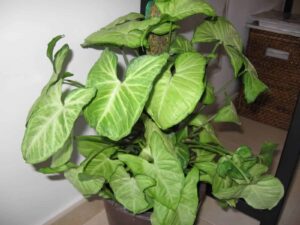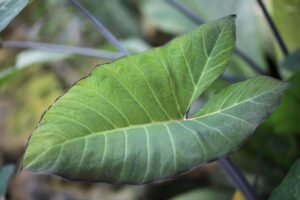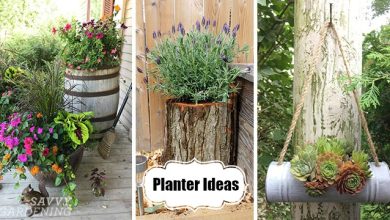El Singonio: [Characteristics, Sowing, Care, Substrate and Irrigation]

 Singonium or arrowhead, a plant with the scientific name Syngonium , is recognized by the peculiarity of its large arrow-shaped leaves and dark green tone with whitish veins that give beautiful nuances to its pronounced nerves.
Singonium or arrowhead, a plant with the scientific name Syngonium , is recognized by the peculiarity of its large arrow-shaped leaves and dark green tone with whitish veins that give beautiful nuances to its pronounced nerves.
It is a plant that grows well indoors . In addition, it can also be considered as an ornamental plant . It is also considered an invasive plant in some parts of the world.
Singonium characteristics
- Family: Araceae.
- Origin: Brazil, Bolivia, Ecuador and Mexico.
- Common Names: Vine or Arrowhead Plant , Tri-Leaf Wonder, Nephthytis, African Evergreen, Green Gold Nephthytis, Goose Foot Plant, Five Toes.
 It grows in the tropical jungle areas of Central and South America, where it develops a great ability to climb rocks and very diverse trees .
It grows in the tropical jungle areas of Central and South America, where it develops a great ability to climb rocks and very diverse trees .
More than twenty species are known, but the most popular are S. podophyllum and S. wendlandi. It belongs to the same family as anthuriums .
It is a climbing plant, (like ivy or silver potus ) with great capacity to grow in a short time , up to a maximum of about two meters high. At some point in its growth, it will require you to support it with a tutor to be able to stay upright.
Ideal for non-experts in the art of gardening, it comes from South America and belongs to the Araceae family .
Temperature: Where to plant the syngonium?
But the ideal is to always keep it at a constant room temperature, without sudden changes that alter it until it loses its beautiful leaves. It adapts well to lower temperatures that are alien to its original nature, but do not subject it to sudden changes or bring it close to a stream of cold or hot air (heating systems with radiators)
Humidity lowers it tolerates it and is more convenient for it. But if the humidity is high and she is very well fed, with all her nutrients, she will endure without problems.
Luz: What needs do you have?
 It requires indirect solar exposure, it should never be insolated for long periods, because its wide leaves will be noticeably affected.
It requires indirect solar exposure, it should never be insolated for long periods, because its wide leaves will be noticeably affected.
And although it can withstand a poorly lit environment, it should be clear to you that it will always need natural lighting. Place it near a window or on a terrace.
But keep in mind that in rather shady places, its foliage turns equally dark and its characteristic shades will no longer be seen. But it does not die.
Substrate and Compost: How do we prepare the soil?
Surely you are wondering right now which is the most suitable substrate for this plant.
A formula containing 4 servings of peat moss for every part of fine sand is more than enough. Also instead of sand, you can add a portion of perlite or polyurethane.
Regarding the fertilizer , we recommend a full type with a 3: 1: 2 balance, at a rate of 150-200pmm. And if we opt for the slow release compost process, just add a calcium compound that increases the pH level .
Irrigation: How and how often do we water?
 When supplying water, it is advisable to do it in a moderate way without allowing the soil to dry out between each watering. Also, do not carry out this action in such a way that the base is flooded.
When supplying water, it is advisable to do it in a moderate way without allowing the soil to dry out between each watering. Also, do not carry out this action in such a way that the base is flooded.
This is actually fatal for many species and this plant is no exception.
The secret of its resistance and durability is to prevent the roots and base of the leaves from rotting with excess water.
It sprays all its leaves if it is too hot a day, but in reality this plant does not demand much in terms of environmental humidity.
It should also be placed a stake with moss, when it begins to shed its leaves. In general, the dry ones are falling and new leaves appear at the top of the stem that must be molded, because the aerial roots that protrude will have to go into the moss. It is not difficult to get it.
Climbing stems also appear that you must cut so as not to rob it of a lot of energy and that it continues to grow compactly.
Do not neglect it and you will have an excellent indoor plant, with great durability and beauty.
Singonium pests and diseases
 Singonium can be susceptible to pests because it grows very thick. They love to hide and be protected within its dense foliage.
Singonium can be susceptible to pests because it grows very thick. They love to hide and be protected within its dense foliage.
Keep your eyes open for mealybugs, especially during their growth. These white , cotton-like pests like to hang out in nodes and under leaves.
We monitor and try to expel them when they have appeared with a neem oil mist spray or outside with the hose.
You also have to be on the lookout for aphids and mites.
It is better to act as soon as you see a plague because they multiply very easily. Pests can travel from one plant to another quickly, so make the necessary controls when you detect them.
Is Singonium a Toxic Plant?
Yes. Plants belonging to the syngonium species are toxic plants .
Most houseplants are toxic, so you should be careful if you have small children or dogs.

![Photo of Albizia Julibrissin: [Cultivation, Irrigation, Associations, Pests and Diseases]](https://www.complete-gardening.com/wp-content/uploads/2022/08/albizia-julibrissin-cultivation-irrigation-associations-pests-and-diseases-300x220.jpg)
![Photo of Hydrangea Care: [Soil, Humidity, Pruning and Problems]](https://www.complete-gardening.com/wp-content/uploads/2022/08/hydrangea-care-soil-humidity-pruning-and-problems-390x220.jpg)
![Photo of Plant Azaleas in Your Garden: [Complete Guide and Answers]](https://www.complete-gardening.com/wp-content/uploads/2022/08/plant-azaleas-in-your-garden-complete-guide-and-answers-390x220.jpg)
